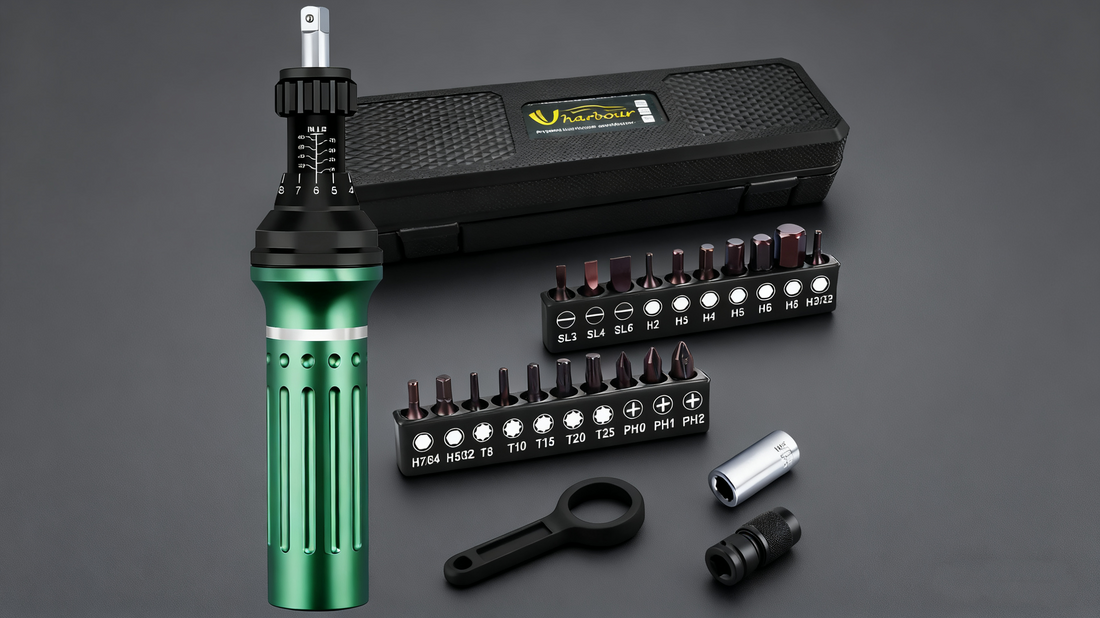
What Is a Torque Screwdriver? — A Complete Guide from Principles to Applications
What Is a Torque Screwdriver? — A Complete Guide from Principles to Applications
In precision electronics, medical devices, and instrumentation assembly, you might hear about a specialized tool called a torque screwdriver. It looks similar to a regular screwdriver, but it plays a critical role in achieving precise and safe fastening. In this article, we’ll break down everything from its working principle to its applications.
1. What Is a Torque Screwdriver?
A torque screwdriver is a tool that controls and limits the tightening torque.
-
Regular screwdriver: Relies on hand feel, which can easily lead to over-tightening or under-tightening.
-
Torque screwdriver: Lets you set a specific torque value, and when that torque is reached, the tool either slips or signals you to stop, preventing excessive force.
In simple terms, it ensures every screw is tightened just right—not too loose, not too tight.
2. How Does a Torque Screwdriver Work?
Torque screwdrivers generally come in two types:
-
Mechanical: Uses internal springs and clutch mechanisms; when the set torque is reached, the tip slips or gives an audible click.
-
Digital (Electronic): Uses sensors to measure torque and alerts the user via a display or sound when the target torque is reached.
No matter the type, the core principle is limiting the maximum applied torque to ensure consistency and safety.
3. Why Use a Torque Screwdriver?
In many precision applications, the tightening torque directly affects product quality and safety:
-
Electronics: Over-tightening a phone or laptop screw can damage the motherboard or crack the casing.
-
Medical devices: Surgical tools or implants require secure fastening without damaging components.
-
Laboratory instruments: Precision screws control critical parts—too loose may cause looseness, too tight may deform parts.
📌 Example: A phone screw may require 0.3–0.5 Nm torque. This is almost impossible to control by feel, but a torque screwdriver can achieve it easily.
4. Applications of Torque Screwdrivers
-
Electronics assembly: Smartphones, computers, cameras.
-
Medical device manufacturing: Secure assembly of delicate components.
-
Automotive and aerospace electronics: Fastening sensors and control units.
-
Laboratories: Precision adjustment of instruments.
-
DIY & repairs: Bikes, home appliances, or any application requiring precise torque.
5. How to Choose the Right Torque Screwdriver?
-
Torque range: Select according to your application (electronics often require 0.1–6 Nm).
-
Accuracy: ±6% is usually sufficient; high-end models can achieve ±2%.
-
Display type: Mechanical models are budget-friendly; digital models offer precision and recording functions.
-
Ergonomics: Consider interchangeable bits, weight, and ease of use.
6. Conclusion
A torque screwdriver may be small, but it’s essential. It solves the problem of relying on hand feel alone and ensures every screw is tightened precisely. From smartphone repairs to medical device assembly, it quietly safeguards both performance and safety.
🔧 Quick takeaway: A regular screwdriver relies on feel, a torque screwdriver relies on precision.
